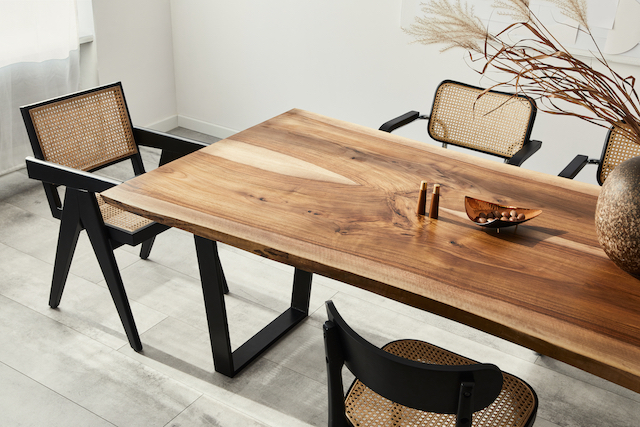
In the realm of interior design, a movement is gaining momentum – a return to the roots, quite literally. As urbanization encroaches further into our lives, the longing for nature intensifies. This yearning manifests in the resurgence of organic materials within interior spaces. From the raw elegance of wood to the earthy charm of stone, designers are rediscovering the allure of natural elements. Let's delve deeper into why this organic revolution is captivating the design world.
In a world dominated by artificiality, organic materials serve as a refreshing antidote, reminding people of their innate connection to the earth. Wood, in its myriad forms, embodies this ethos effortlessly. Whether it's the weathered planks of reclaimed timber or the smooth curves of hand-carved furniture, wood brings a sense of warmth and authenticity to any space. Its natural imperfections tell a story of growth and resilience, adding depth and character to interiors.
Similarly, stone – with its rugged textures and earthy hues – evokes a primal sense of grounding. From the grandeur of marble to the simplicity of slate, natural stone exudes an elemental beauty that transcends trends. Each slab bears the marks of time, a testament to the geological forces that shaped it. By incorporating stone into interior design, designers invite the raw energy of the earth into living spaces, fostering a sense of harmony and balance.
But the appeal of organic materials extends beyond their aesthetic qualities. There's a tactile pleasure that comes from interacting with natural surfaces – the cool touch of marble, the warmth of wood grain beneath fingertips. Unlike their synthetic counterparts, organic materials engage the senses on a primal level, evoking a visceral response that resonates deeply within.
Furthermore, the organic movement in interior design is driven by a growing awareness of sustainability and environmental stewardship. As consumers become more conscious of the ecological impact of their choices, there's a shift towards materials that are renewable, biodegradable, and ethically sourced. By opting for organic materials such as bamboo, cork, and rattan, designers are not only reducing their carbon footprint but also celebrating the beauty of nature in its purest form.
In essence, the resurgence of organic materials in interior design signifies a return to our roots – a recognition of the inherent beauty and wisdom of the natural world. By incorporating these materials into living spaces, designers create environments that nourish the soul and inspire a deeper connection to surroundings. In the midst of a rapidly changing world, let the organic revolution inspire and rediscover the timeless allure of nature in interior design.





